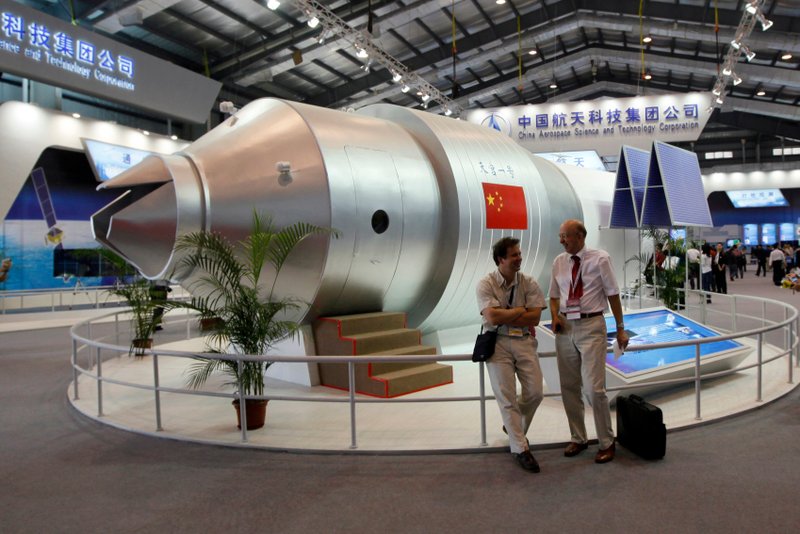China’s defunct Tiangong-1 space station is set to become a “splendid” fireball come Monday, according to Chinese authorities.

The space lab, which is hurtling toward Earth and is expected to re-enter the atmosphere within the next day, was launched by China’s National Space Administration in 2011 and hosted two crews of Chinese astronauts (otherwise known as taikonauts) in 2012 and 2013.
The 10.4-meter-long (34.1-foot) Tiangong-1, which translates to “Heavenly Palace 1,” was launched six years ago to carry out docking and orbit experiments as part of China’s ambitious space program, which aims to place a permanent station in orbit by 2023.
The Tiangong-1 was designed to be operational for just two years, according to Chinese officials. While China originally planned to control Tiangong’s return to earth using its thruster burn, writes The Aerospace Corporation on March 16, 2016, China reported to the United Nations that the station had “ceased functioning.” While there’s been significant speculation as to why this is, no one knows for certain.
The Aerospace Corporation is a federally-funded research and development centre for the United States Air Force that’s been tracking Tiangong-1’s return to Earth.
Currently, the research group predicts that the craft will re-enter Earth’s atmosphere on April 2, 2018 02:00 UTC (Sun., April 1, 10 p.m.), and according to Space.com, will come crashing down to Earth at 4:30 p.m. EST (give or take about eight hours).
Since the Chinese lost contact with the spacecraft a year ago, Tiangong-1 has been speeding back to Earth. According to the Aerospace Corporation, most of the space station should burn up upon re-entry, and the chances that the debris will hurt anybody is extremely slim.
WATCH: China says unlikely large pieces of space station will crash to earth

“There is a chance that a small amount of Tiangong-1 debris may survive reentry and impact the ground. Should this happen, any surviving debris would fall within a region that is a few hundred kilometres in size and centred along a point on the Earth that the station passes over,” according to Aerospace Corporation.
The European Space Agency (ESA) has also made a prediction, forecasting that the space station will re-enter sometime between late April 1 and early April 2 (GMT), targeting a crash time within that time window.
The ESA says Tiangong-1 is expected to come to Earth somewhere between 43 degrees north and 43 degrees south, a range covering most of the U.S., China, Africa, southern Europe, Australia and South America.
Canada, northern Europe and Russia are out of range. Only about 8.5 per cent of the spacecraft is likely to survive re-entry.
-With files from the Associated Press and Reuters.




Comments